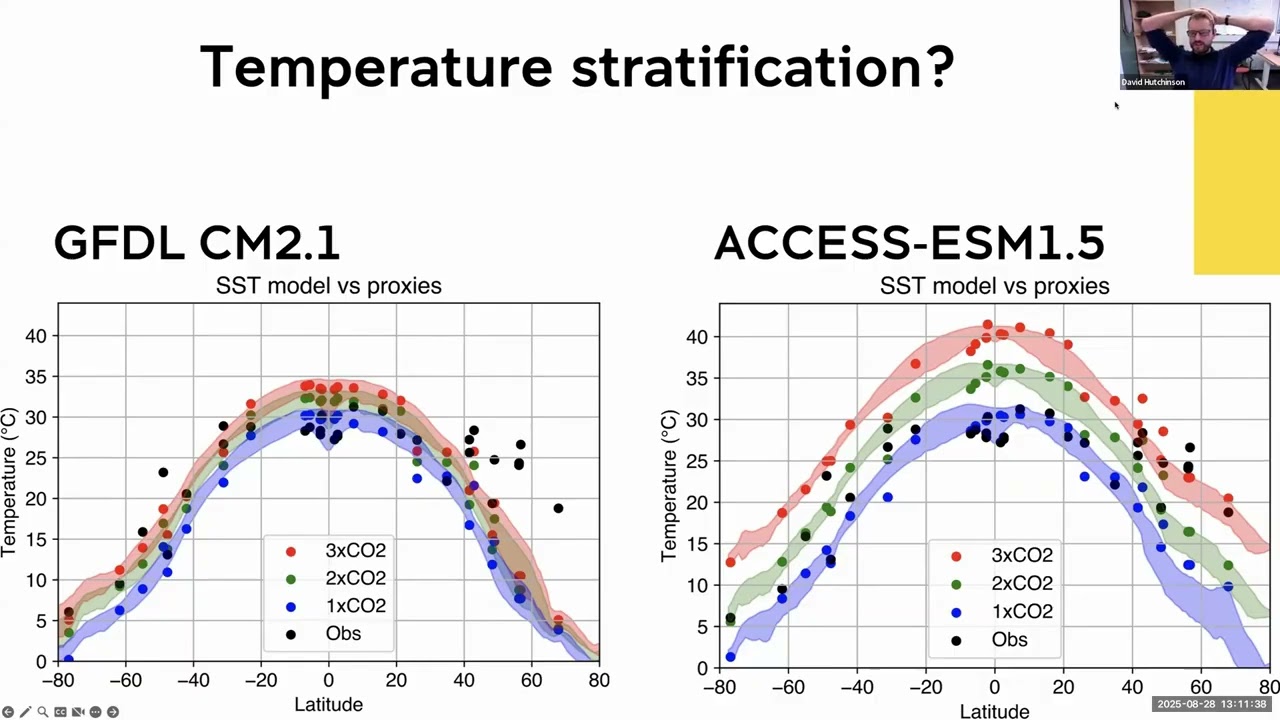Date: 28/08/2025
Chair: @dkhutch
Participants: 18
1. Admin and resource usage
-
Science Presentations: We currently have no upcoming presentations scheduled. Presentations from recent conferences and workshops are welcome, as are informal updates on in progress work. Members are encouraged contact the ESM WG co-chairs or @spencerwong to propose a topic.
-
LG87 Resource Usage:
- End of quarter rebalancing has allocated an additional 437.5 KSU to the ESM WG, as the original allocation had been used up. It’s good to run experiments early in the quarter, as resources can be reallocated at the end of the quarter if available.
- If you have any experiments you are interested in running with ESM WG resources, follow the proposal guidelines here to apply to use WG compute. Members are encouraged to apply for resources early in the quarter, as there may be opportunities to obtain more resources later in the quarter.
- Storage usage at 62 TB of 100 TB allocation. A stocktake of older data might be required to see if any could/should be shifted off
gdata/lg87.
3. Science presentation
@dkhutch presented an Update on Miocene simulations using ACCESS-ESM1.5
Introduction
- Previous Miocene simulations had been run using the GFDL model using two different topography reconstructions – the Burls et al (2021) dataset used in MIOMIP, and the Straume et al (2020) dataset which may contain more accurate Atlantic-Arctic gateways. These simulations suggested that the Miocene was close to a transition between PMOC and AMOC states.
- This project aims to run similar simulations using ACCESS-ESM1.5, using 1x, 2x and 3x CO2.
Results
- ESM 1.5 was run using the Burls et al (2021) topography with initial conditions from the spun-up GFDL model.
- Deep ocean ventilation was of particular interest, as it responded differently to CO2 levels compared to the GFDL model. In ACCESS-ESM1.5, deep water formation was killed when using 2xCO2 and 3xCO2. One cause may be the model’s higher climate sensitivity.
- Several modifications were made to the initial conditions to try and kick start the deep water formation:
- Reducing the initial stratification by bumping up the deep ocean temperature, and using an idealised temperature/salinity profile were both unsuccessful.
- A hard reset of temperature and salinity to constant values was more successful, and produced increased ventilation at the start of the runs. However overturning in the southern ocean eventually decayed in the higher CO2 cases.
Conclusions
- ACCESS-ESM1.5 is resistant to producing Southern Ocean deepwater under higher CO2, even when initial conditions have been created to favour deep water formation.
- Transplanting initial conditions from a spun-up model to another model may not work well especially if the climate sensitivities don’t match.
- This work has produced interesting Miocene configurations displaying different levels of stratification and ventilation. These will be useful for future work investigating rapid warming, de-oxygenation, and AMOC collapse.
See here for further background on the Miocene experiments!
Please feel free to correct any mistakes in these notes directly, or message @spencerwong with corrections.
Additional information
- Guidelines for accessing working group compute resources
- Share an experiment by starting a new topic in this sub-category.
- Join the ESM Group
- Subscribe to the ESM Working Group calendar:
- ESM Working Group Meeting Calendar feed (right click on the link and copy the URL)
- Use calendar feed URL to subscribe to the calendar
